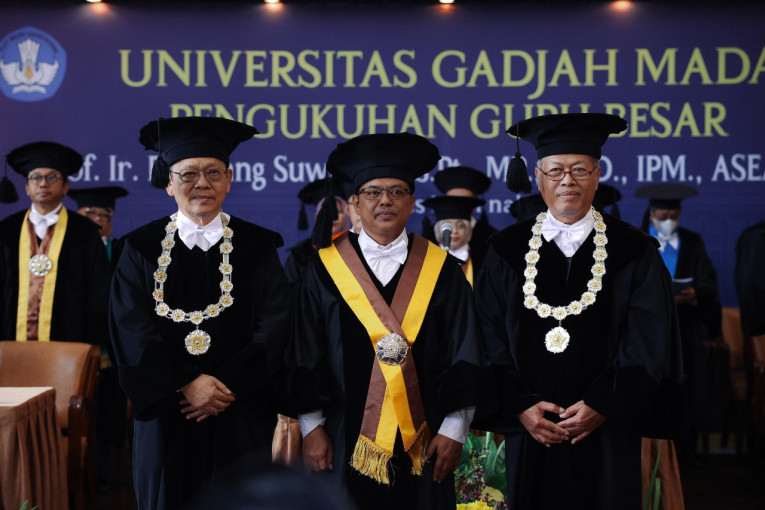
On Tuesday (September 5), Dr. Bambang Suwignyo, a lecturer at the UGM Faculty of Animal Science, was inaugurated as a professor of animal nutrition and feed.
During the professorship inauguration ceremony, Professor Bambang Suwignyo delivered a speech titled “The Benefits and Opportunities for Developing the Queen of the Forages (Tropical Alfalfa) in Indonesia.”
Professor Suwignyo pointed out that stunting in Indonesia is a serious concern because the adverse effects of stunting affect the quality of the future generation’s human resources.
One solution to combat stunting is to consistently and sustainably provide high-quality nutrient intake to pregnant women, breastfeeding mothers, and infants up to a minimum age of six months through complementary feeding.
The most complete sources of nutrients are eggs and milk. According to the professor, functional eggs can help address stunting issues by providing children with micro-minerals like iron (Fe) and zinc (Zn).
“Innovative eggs with high iron and zinc content are needed. In order to produce functional eggs with high iron and zinc content, the chickens’ diet is influenced by the green feed in their diet,” Professor Suwignyo said.
Based on his research, the Queen of the Forages BW or tropical alfalfa in feed formulas can be a solution to produce highly nutritious eggs because this plant contains high protein, essential amino acids, calcium, and phosphorus.
“The high content of Fe and Zn in tropical alfalfa can be used as a component of chicken feed because it can affect the Fe and Zn content in the eggs they produce,” he explained.
The Zn content in tropical alfalfa reaches 67 mg/kg, twice the Zn content in rice. The iron content in tropical alfalfa is 0.042 percent, higher than other iron-rich foods such as red meat, seafood, tofu, green vegetables, and other legumes.
In addition to eggs, Professor Suwignyo noted that milk is also a livestock product with complete nutritional content.
However, milk production in Indonesia still does not meet national demand, with 80 percent of Indonesia’s milk supply imported from a total national demand of 4.4 million tons annually.
Furthermore, the average milk production per lactation period for dairy cows in Indonesia is around 3,000-4,000 liters or 10 liters per cow per day.
“This is different from milk production in subtropical countries, which can reach 7,421 kg per lactation or twice that of Indonesia,” he explained.
According to Professor Suwignyo, tropical alfalfa can increase milk production in dairy cattle because forage should account for 60-70 percent of the diet, with concentrates making up 30-40 percent.
“Tropical alfalfa legumes have the potential to be a source of feed to increase the productivity of dairy or milk goats in Indonesia,” he said.
In the professor’s estimation, if every dairy farmer in Indonesia were to plant tropical alfalfa, it would undoubtedly increase milk production. Tropical alfalfa can yield between 8,000 and 13,000 tons per hectare of fresh grass per 30 days.
“In one year, it can produce 120 tons per hectare,” he concluded.
Author: Gusti Grehenson
Photographer: Donnie

